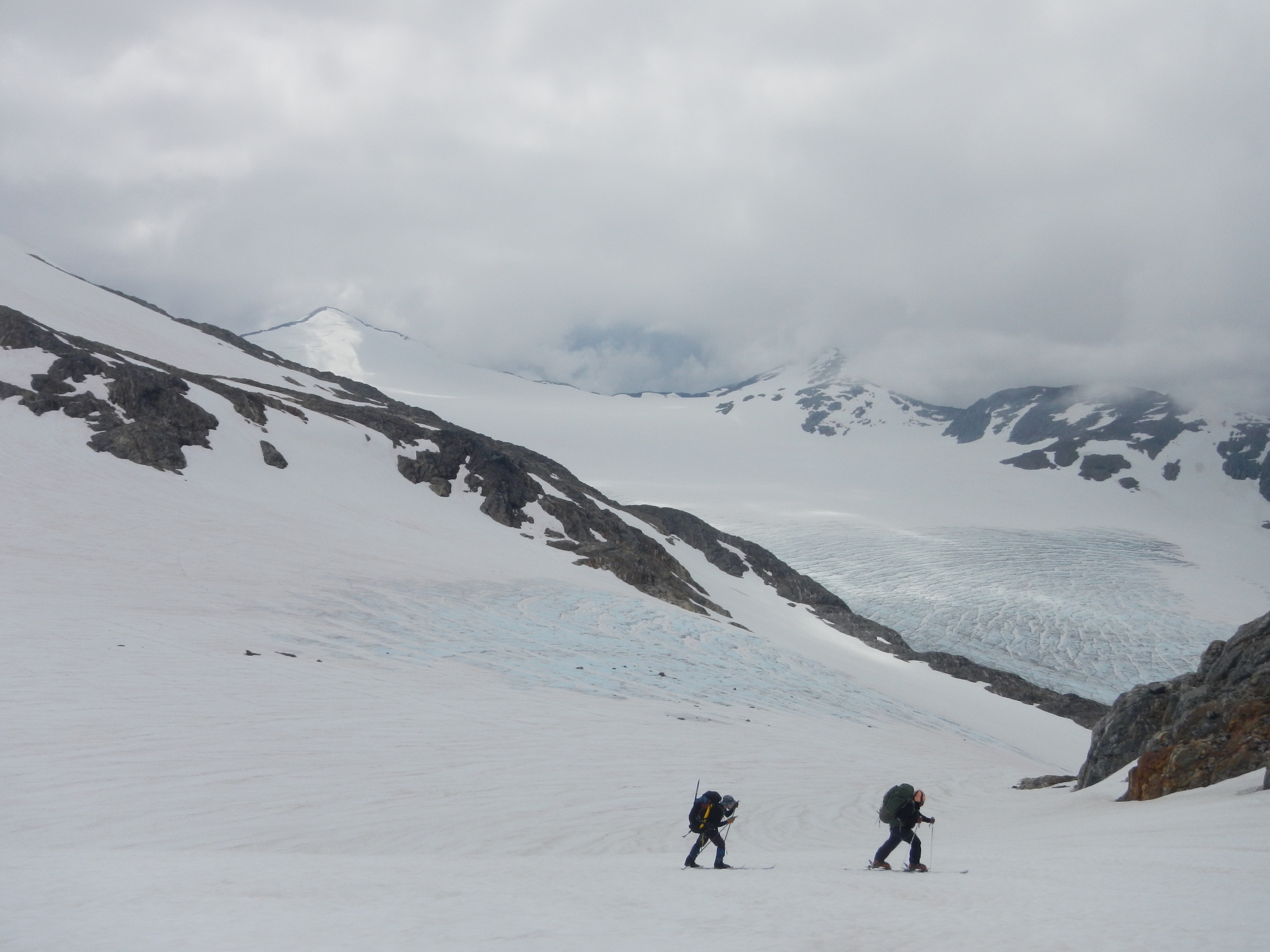by Kim Quesnel, Stanford University, photos by Alexandre Mischler, Yukon College
After sleeping for a few hours, we woke at our campsite, the Norris Cache, to another precipitation-free day. Some people meandered out of tents while others crawled out of sleeping bags after spending the night outside. We slowly tried to make sense of what had happened the day and night before and of what had happened earlier in the morning when three snowmobiles came to pick up more than half of our group members. People who wouldn’t be able to complete the traverse that day included students who had to catch a helicopter for their field work, those who had blisters the size of index cards, or other ailments so pressing that they were not able to make the final push to Camp 10 on skis.
As I zipped open the door to the tent that I was sharing with Stephanie and Natalie, I couldn’t help but smile at the hectic journey of the day before. My smile got bigger because Kate, the wonderful staffer who had come to help us finish the trek, was dancing around in the “kitchen”, boiling water for breakfast and making cowboy coffee to get us excited for the day to come. I walked over to her and noticed that in addition to the best oatmeal and coffee of my life, there was also a homemade lemon cake with marionberry frosting that had been sent in the snow machines as a present from Camp 10. The second round of snow machines came around 10:30am to pick up the tents, extra food, some of the gear from our backpacks, and the final few members of the group who wouldn’t be able to complete the ski.
Cake from our friends at Camp 10
Kitchen at the Norris Cache
Moving slower than usual, we got our belongings together, and by 12:15pm we started skiing. There were 7 of us left out of the 16 who had started the traverse day before- Luna, French Alex, Natalie, Tristan, our incredible staffers Annie and Stan, and myself. Kate also joined us for the traverse, probably mostly as a safety concern since we were all exhausted from the day before. The trip started off on a positive note as we realized within the first ten minutes that the skiing was going to be infinitely better than the conditions we had experienced the day before. All that we had to do was a simple kick and glide instead of struggling across icy suncups. To make things even better, we were following a snow machine track and could ski side by side instead of in a single file line, so we could chat while we moved. Kate even brought her JammyPack (fanny pack with built in speakers) and three fully charged iPods, so we were rocking out to music all day as we skied.
Kate and Annie skiing
We followed a 50/10 schedule, skiing for about 50 minutes and stopping for 10 (with the exception of one slightly longer break to re-tape blisters). We skied and skied and skied, practically in a straight line across the entire Taku glacier with Camp 10 in sight (yes, C-10 is real…) for the majority of the day. We were tired, burnt out, and sore, but morale was high and we were all happy to be spending the day together. Luckily, Luna kept us laughing all day while we trekked along.
Skiing across the Taku glacier
Taking a break during the traverse
While our trail parties may have taken the longest amount of time to complete the first part of the traverse, we had one of the fastest times for the second section as we skied the 12 miles from the Norris Cache to Camp 10 in 6.5 hours. We were met at the bottom of the Camp 10 hill by bear hugs and cheers from our friends, some of whom we had been separated from for almost an entire week. As promised, Camp 10 was sunny with gorgeous views, overlooking the entire Taku glacier with endless mountains in sight. It was the perfect way to begin the next chapter of our JIRP experience.
The final trail party makes it to C10!












